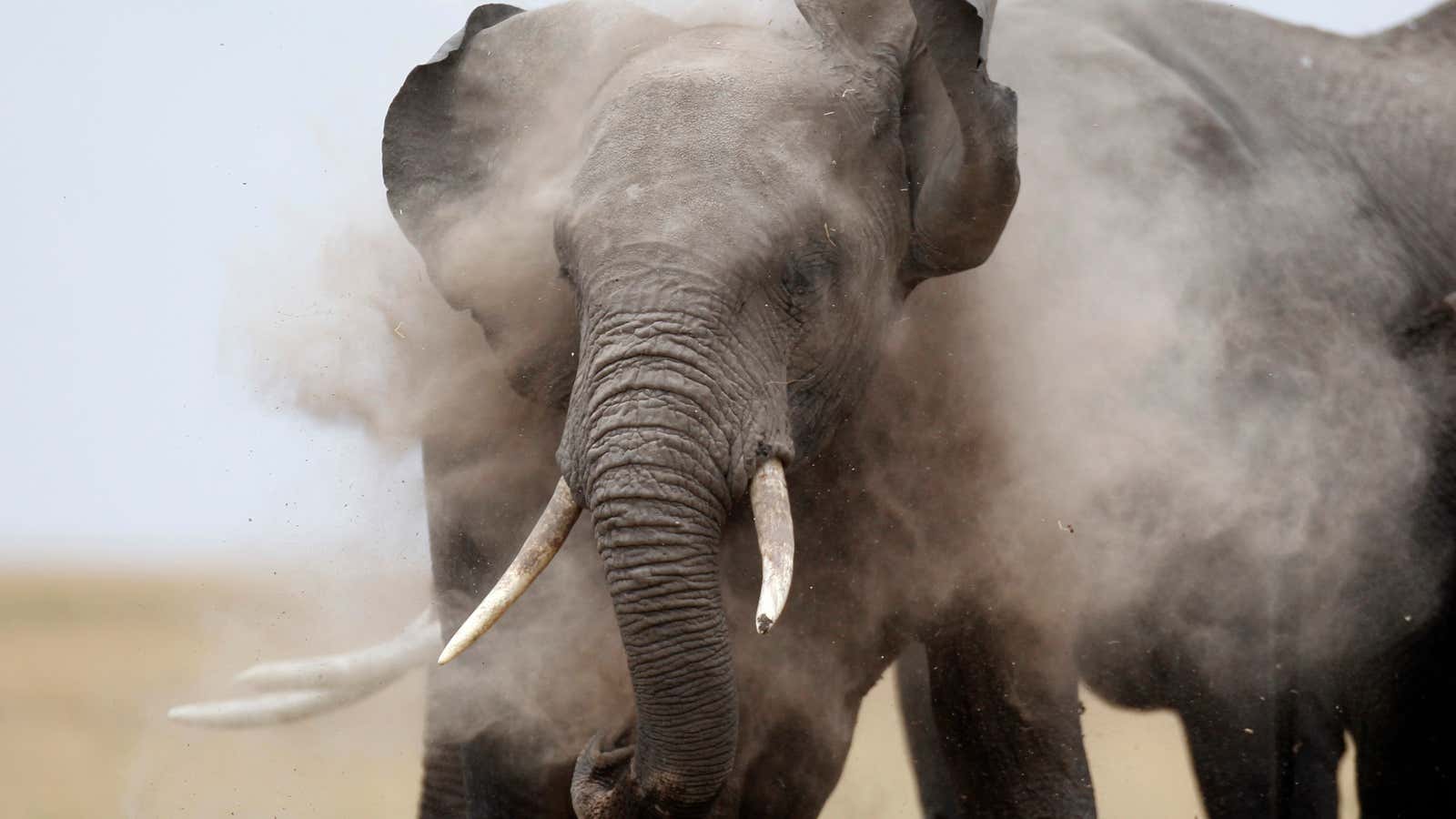The illegal wildlife trade has become the world’s fourth-largest form of transnational organized crime. And African elephant ivory is a major part of the estimated $3 billion trade, according to new research published in the journal Science.
Seven researchers from the University of Washington and Interpol, led by DNA expert Sam Wisser, have found through genetic evidence that a staggering portion of the illegally hunted ivory was being taken from two key regions in two African countries. A total of 1,350 reference samples were collected at 71 locations across 29 African countries while focusing on major ivory seizures made between 1996 and 2014.
Using dung, hair and tissue samples from elephants across the continent, the scientists devised a map showing where various populations lived based on DNA traits. They extracted DNA from seized ivory and identified the location where elephants with matching DNA currently live.

Between 86% and 93% of savanna elephant ivory was traced back to southeastern Tanzania and northern Mozambique. Of more concern is the fact that Tanzania has consistently remained a primary poaching hotspot for savanna elephants.
If the hotspots are as few and concentrated as the data suggests, international law is expected to focus on them to choke the flow of contraband ivory. The researchers concluded: “Our results reveal recurrent patterns that can help guide law enforcement efforts to diminish organized trade in ivory and protect vulnerable elephant populations.”
Elephant poaching is a well-coordinated crime. With an estimated 434,000 elephants left in Africa, an average 40,000 of these giant iconic mammals are killed every year. If this pattern is not disrupted, elephants face extinction on the continent.
China is believed to be the largest market for ivory, with the US a close second. It’s long been used in jewelry, art and other items. Rising wealth in China has contributed to a boom in demand for ivory, but China’s government has lately shown signs of a crackdown on its domestic market.
There is an ongoing dialogue between China and the US on combatting the illegal ivory trade. Conservation groups are hopeful talks will eventually produce a coordinated international response to the crisis.
